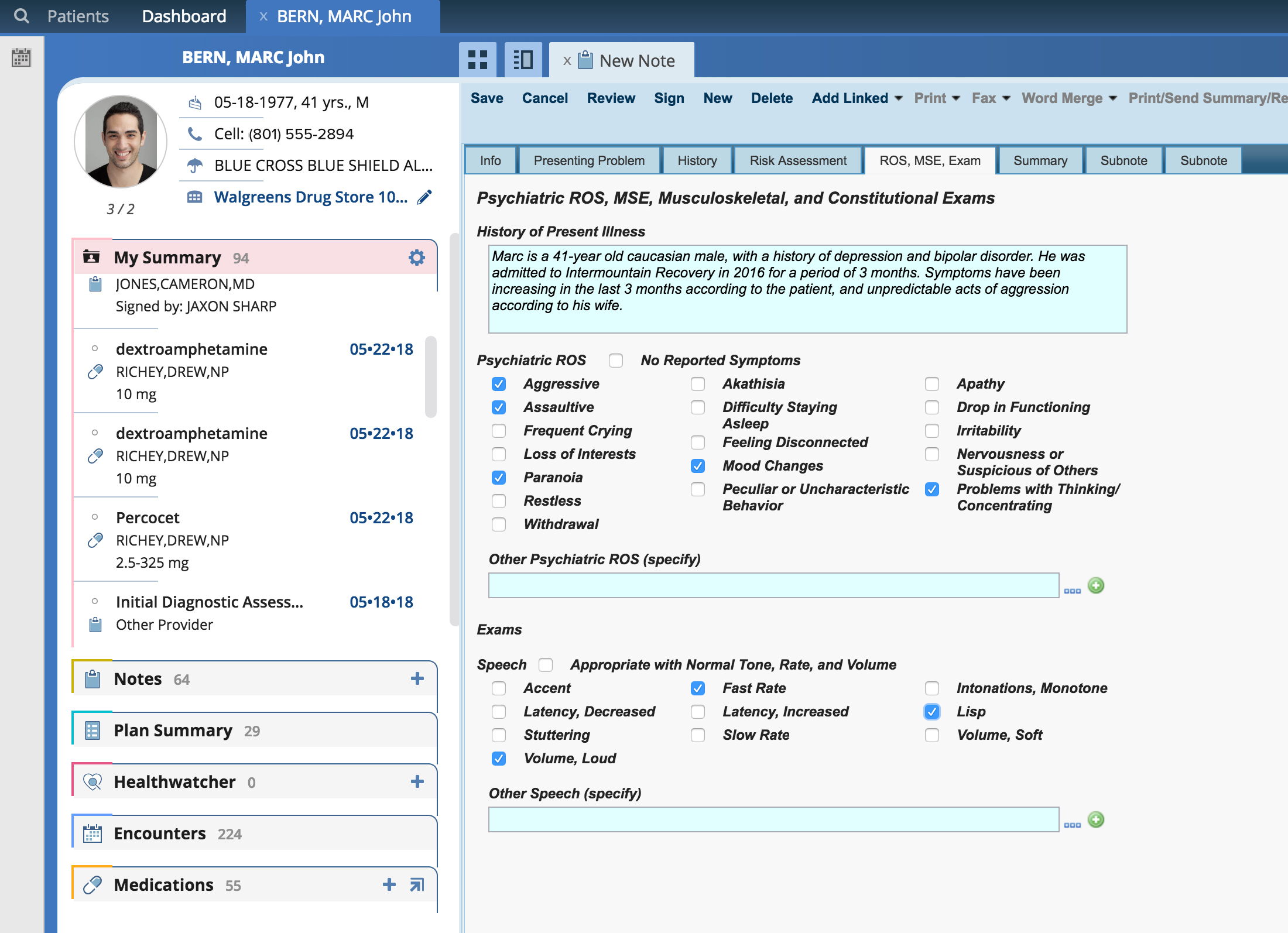ezEMRx – Redesigning EHR for Real-World Public Health
Transforming a legacy EHR system into an AI-augmented platform for compliance, collaboration, and efficiency
TL;DR Summary
Platform
Web-based EHR SaaS
Role
Lead UX/Product Designer
Company
Custom Data Processing Inc.
Duration
12 months
Tools & Team
Tools:
Figma, Miro, Jira, Confluence, Zoom, Google Forms
Team:
PM, AI Strategist, Engineering Lead, Clinical QA, UX Researcher
✅ Outcomes
Project Overview
❗ The Problem
ezEMRx served public health departments, immunization clinics, and WIC programs — but its outdated interface, inconsistent documentation workflows, and lack of mobile optimization led to clinician burnout and audit anxiety.
🎯 The Opportunity
As public health demands grew (WIC modernization, pandemic response, integrated care), there was a clear need for an intelligent, user-friendly platform that minimized manual overhead and increased compliance readiness.
"How might we reduce documentation fatigue while building trust in AI-assisted compliance and referrals for real-world public health?"
Strategic Design Goals
- Empower clinicians with auto-suggestions and override control
- Simplify compliance with real-time, color-coded audits
- Unify workflows with cross-role collaborative notes
- Streamline referrals using AI-based logic and historical outcomes
My Role & Responsibilities
Title: Lead UX/Product Designer
Scope: UX strategy, information architecture, full UI design, and dev handoff
- Led stakeholder workshops and contextual interviews across 3 states
- Re-architected platform IA and user flows
- Designed 40+ responsive screens for 3 user roles
- Built design system with accessibility tokens and documentation
- Delivered QA specs, accessibility reports, and redline assets
Problem & Opportunity
Initial State
- Complex, repetitive charting for every patient type
- No referral suggestion logic — prone to misrouting
- Manual compliance reviews before audits
- Siloed case notes with no version history

Original EHR interface showing complex navigation and outdated design patterns
Real Problem Faced
Clinicians struggled with decision fatigue from duplicative forms, while administrators lacked real-time oversight into audit readiness. AI was distrusted unless its logic was made transparent.
Resolution:
We introduced smart charting with AI-assist fields, confidence badges, and hover-to-explain tooltips. A collapsible compliance drawer tracked real-time audit flags, and collaborative case notes gave admins context without interrupting care.
Timeline
| Phase | Duration | Activities |
|---|---|---|
| Discovery | Month 1–2 | Interviews, usability audit, workflow analysis |
| Define | Month 2–3 | Personas, journey mapping, IA schema |
| Design | Months 3–6 | High-fidelity UI design, prototyping, accessibility |
| Validate | Months 5–7 | Multi-site usability testing, iterative updates |
| Delivery | Months 7–12 | Dev handoff, QA support, training & rollout assets |
Research & Insights
Research Methods
- 1:1 interviews (WIC & public health clinic staff)
- Observation of live patient sessions
- Survey feedback from 4 different public health agency types
- Legacy system analytics (field usage, form abandonment)
Key Insights
- Documentation fatigue was driven by duplicated inputs and low discoverability
- Referrals often failed due to lack of real-time decision support
- Compliance concerns increased anxiety during audits
- Collaboration needed context, not just shared access
User Personas
👩 Claire – WIC Clinician
Goals:
Reduce charting effort, ensure WIC compliance
Pain Points:
Repetitive data entry, confusing audit logic
Needs:
Smart charting, AI explainability, single-patient timeline
👨 Mark – Program Administrator
Goals:
Track compliance across clinics, manage quality
Pain Points:
Blind spots into clinic activity, no version control
Needs:
Case note visibility, compliance dashboards, referral analytics
User Journey Map
Claire's Daily Flow
| Stage | UX Opportunity |
|---|---|
| Patient Visit | AI-assist + confidence indicators |
| Charting | Auto-prefill + inline explainability |
| Referrals | Suggested routing based on success rates |
| Audit Check | Real-time compliance checklist |
| Follow-up | Access to shared threaded case notes |
Mark's Admin Flow
| Stage | UX Opportunity |
|---|---|
| Oversight | Dashboard of clinic activities |
| Audit Prep | Checklist history + red flag logs |
| Case Review | Note versions + staff comment trail |
Competitive Analysis
| Feature | ezEMRx (New) | Legacy EHR | Competitors |
|---|---|---|---|
| Smart Charting | ✅ | ❌ | ⚠️ |
| AI Referral Suggestions | ✅ | ❌ | ⚠️ |
| Real-Time Compliance Checks | ✅ | ❌ | ⚠️ |
| Threaded Case Notes | → | ❌ | ⚠️ |
| Role-Specific Dashboards | ✅ | ⚠️ | ⚠️ |
Key Differentiators:
- Inline AI with explainability, not automation-only
- Real-time audit tools designed for field staff
- Patient-first timeline spanning charting, visits, and referrals
Core Features & Innovations
- Smart Charting: Auto-suggest fields with badge-level confidence
- AI Referral Builder: Suggests destinations based on logic + overrides
- Real-Time Compliance Drawer: Checklist with flag severity + notes
- Threaded Case Notes: Comments, history, and role-based visibility
- Patient Timeline: Chronological summary with inline preview
Results & Impact
Metrics
| Metric | Change |
|---|---|
| Documentation Time | ↓ 20% |
| Compliance Pass Rate | ↑ 70% |
| Case Notes per Patient | ↑ 2.3× |
| Referral Time | ↓ 35% |
| AI Transparency Clarity | 92% positive user feedback |
Qualitative Feedback
"The referral suggestions saved me so much time — I finally trust it."
– WIC Clinician
"Audit prep doesn't feel like a fire drill anymore."
– Program Director
"I know what the AI is doing — and I can overrule it."
– Public Health Nurse
Final Reflections
What I Learned
- Design earns trust: Audit-ready design is about transparency, not control
- AI ≠ automation: Users want augmentation with override
- Simplicity scales: Reusable flows help serve multiple programs
- Clinician time is precious: Microcopy and layout save minutes that matter
"Design isn't just what it looks like — it's how a clinician trusts an EHR to document care, reduce audits, and get referrals right."